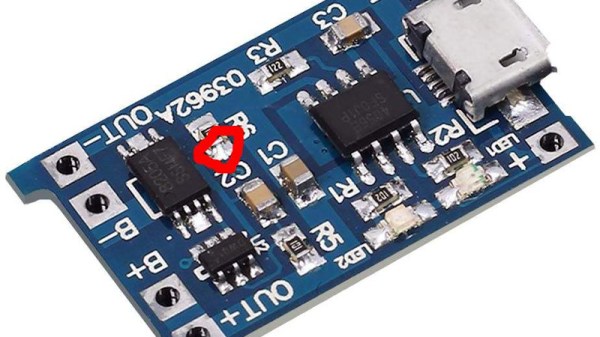It should be a feature of every device powered by a lithium-ion battery, that it has a protection chip on board that automatically disconnects it should it go out of its safe voltage range. A chip most often used for this purpose in single-cell applications is the Fortune Semiconductor DW01, and [Oliver] shares a tip for using this chip to power down the battery. The DW01 has a CS, or current sense pin, which if taken high momentarily will put the chip into an off state until the battery is disconnected.
Looking at the DW01 datasheet we can see that this would work, but we can’t help having a few questions. The CS pin is a safety sensor pin, providing over current, short circuit, and reverse polarity detection. It’s the kind of pin one might mess with only when one is absolutely certain it’s not likely to trigger a dangerous fault condition, so a bit of care should be required. However, we can see that leaving its resistor in place and supplying it a momentary logic level through another resistor should work. We’d be interested in the views of any readers with more experience in the world of lithium battery protection on this hack.
Meanwhile, a good read for any reader should be our look last year at lithium-ion safety.












